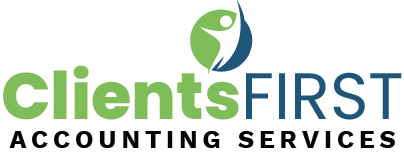Whether you are a director of a small business or a CEO of a multinational, you will be dealing with lots of facts, figures, and financial statements to make some critical decisions. For that, it is of utmost importance that you understand the basics of financial statements.
The best part is that you do not need any background in finance to gain this skill. This article will give you an easy introduction and details about four basic financial statements that every senior management personnel must familiarize themselves with.
4 Financial Statements to Know
We all know how painstakingly complicated financial statements can be. But if you understand each type and the information they offer, it will make your life easier. You will be able to derive valuable information from financial statements.
So, let us have a look at the four most common financial statements.
1. Income Statement
An income statement is one of the most basic and standard financial statements. Your company’s income statement will show the net earnings or net loss. This statement is responsible for keeping track of all the cash or money coming in or going out of your business.
The money that comes in is known as revenue, whereas the money going out is your expense. When your company’s expenses exceed its revenue, this will show as a net loss on your income statement. You can break down your income statement into several categories including.
- Operating Expense – includes rent, advertising rent, and other office expense
- Sales – costs of all the goods your company sold
- Non-Operating Expense – these include all the costs related to one-time purchases as well as interest you pay on any borrowed money.
An income statement also reports earnings per share (EPS). EPS tells you how much money each shareholder would receive in case of distribution of the company’s net earnings for a specific period of time.
The top of your income statement will show the total money your sales brought in. This is also known as gross sales or revenue before any deduction of expenses. The second line is the amount of money your company does not expect to collect on particular sales. For example, this may be due to merchandise return or sales discount.
Costs of sales is another important component of an income statement as it shows the amount you spent in goods production during a specific accounting period. Other line items include operating expenses, marketing expenses, depreciation costs, interest income, and interest expenses.
2. Balance Sheet
You may have heard about balance sheets as well. In case you’re not sure of what it is, most business management officials are primarily interested in the income statement. Bottom line: they want to know if the company is making profits or spiraling into losses.
A balance sheet gives you a birds-eye view of your company’s financial standing in various forms. On a balance sheet, you will be able to track your assets, the equity of the owners or shareholders, and liabilities.
Assets
Your assets include property, cash, inventory, and anything your company owns, and you will find them listed on the left side of the balance sheet. The listing for assets generally considers how quickly you can convert them to cash.
Current assets are those your company expects to convert into cash within a year, such as inventory. Non-current assets refer to items your company does not expect to convert into cash anytime soon. For example, your fixed assets that are essential for running your business operations and not available for selling, such as office furniture, property, trucks, etc.
Liabilities
These are your expenses, including rent, utilities, debts, office expenses, operating and production costs, etc. Furthermore, your company’s liabilities also include accounts payable, meaning expenses you have received but not paid them yet.
Current liabilities are financial obligations your company expects to pay within a year. Long-term liabilities refer to monetary obligations with a due date more than a year away.
Equity
Amount the owner and each stakeholder invested in the company. You can establish the equity of each owner and shareholder after deducting the total amount of your liabilities from the total amount of your assets. Thus, both your equity as well as liabilities are on the right side of your balance sheet.
The reason why they call it a balance sheet is because it should always show a balance between the money going out and the money coming in. This means the money you spend must be equal to the assets or services you used. Here is the formula of the balance sheet.
Your Assets = your shareholders’ equity + your liabilities
3. Cash Flow Statement
Your cash flow statement accomplishes one thing, and that is to let you know where all your company’s cash went. Various factors make cash flow statements a little bit more complicated than other financial reports.
While you may not have a four-year degree in accounting, learning the basics of a cash flow statement can help you extract meaningful information. Some of the activities mentioned on your cash flow statement include your investing activities, operating activities, supplemental information as well as financing activities.
In case you are a small to medium-sized business, the cash flow statement may only contain two categories. These are cash outflows and cash inflows. Simply remember, the cash flow statement has one purpose only, i.e., to show where your company’s cash resources are flowing in from as well as where they are going out.
A cash flow statement enables you to see if the company is spending more money than what it is making or vice versa. If the amount of cash your company has on the cash flow statement is more than your net income, then your net earnings are what they call “high-quality.”
You can divide cash flow statements into three types of activities.
Operating Activities
This part of a cash flow statement reconciles the company’s net income to the actual amount of cash your company used in or received from its operating activities. For this, it adjusts your net income for all non-cash items, such as adding depreciation costs and adjusting all cash provided by or used for operating liabilities and assets.
Investing Activities
This part of your cash flow statement displays cash flow from investing activities. These generally include sales and purchase of all long-term assets, including property, equipment, plants, and investment securities.
Financing Activities
This final part of the cash flow statement refers to cash flow for all financial activities. These include cash raised via selling bonds and stocks or borrowing money from the banks. Similarly, paying back any loans will also show up in this cash flow statement.
4. The Statement of Owners’ Equity
An owner’s equity is typically the rights of the owner to a business’s assets. This is the amount of money left for a business owner after you have deducted all of the company’s liabilities and expenses from the assets. The term owner’s equity also refers to situations with a sole proprietorship.
It can be stakeholders’ equity statement if multiple partners or investors own the company. Your business’ statement of owners’ equity is a type of financial statement that shows any changes on the balance sheet’s equity section. In simpler terms, the statement of owner’s equity in your company will report any incidents of an increase or decrease in stakeholders’ equity over a specific period of accounting activity.
You may not have to go through this type of financial statement all the time. There are still some critical components that you must familiarize yourself with, and they include
- Your beginning equity balance – the owners’ equity at the beginning of each month or accounting period.
- Any additions and subtractions – if any profits or losses were a reason for the increase or decrease of an equity. These additions and/or subtractions are for a specific accounting period and may include factors such as dividend payments, net income, and withdrawals.
- Ending balance – The final amount of owner’s equity at the end of a month or accounting period.
Conclusion
Now that you know what four basic financial statements are and the kind of information they provide, you can better understand your company’s financial health. However, there is a lot more to financial statements if you wish to learn how to analyze them.






